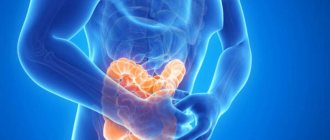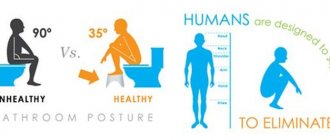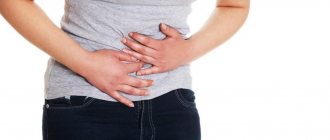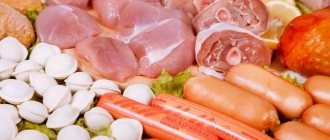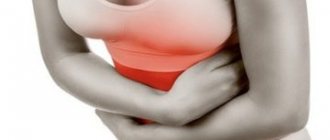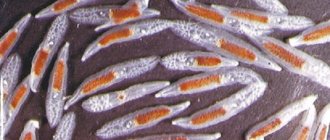Periodically appearing cramps in the abdominal area cause a lot of discomfort and worry a person. Cramps in the stomach cause a deterioration in the general condition and can occur in adults and children. It is important to know that any pain in the abdominal area is a sign of a disruption in the normal functioning of the gastrointestinal tract. What are the reasons, what to do and when is it better to seek treatment from a doctor, we will consider further.
Renal colic
The syndrome develops due to increased peristalsis of the ureter, which tries to get rid of the obstruction that impedes the outflow of urine. The most common cause of cramping pain in the lower abdomen here is developing urolithiasis. There may be some kind of inflammatory process with a clot of pus, or an oncological disease.
Cramping pain is felt on the left or right, “radiating” to the genitals, to the inner femoral surface, self-diagnosed pain in the kidney area.
You should consult a specialist as soon as possible - delay is fraught with dropsy of the kidney, the development of a secondary infection, purulent pyelonephritis.
What causes pain to seize and immediately release
As already noted, spasms quite often appear with peptic ulcers or inflammation of the duodenum. This happens due to an increase in acidity levels or the formation of an inflammatory process.
Cramping pains often accompany spasms of the diaphragm, provoke its inflammation or circulatory disorders. In acute cholecystitis, pain appears due to a violation of the outflow of bile, provoked by the presence of stones in the gallbladder.
The disease is characterized by alternating periods of exacerbation and remission. Soreness is more common after eating spicy and fatty foods, jolting driving, or lifting heavy objects.
Probable Causes
When can cramping pain in the abdomen occur? There are many possible reasons:
- Consequences of abortion.
- Ectopic form of pregnancy.
- A woman's menstruation.
- Origin of myomatous node.
- Mechanical obstruction of the intestinal tract.
- Volvulus of the sigmoid colon.
- Intussusception.
- Volvulus of the cecum.
- Obturation of the rectum, sigmoid colon.
- Intestinal failure.
- Infringement of a hernia - inguinal or femoral.
- Dysentery.
- Renal colic.
We will discuss the most common causes of cramping abdominal pain in detail below.
Strangulated hernia
A hernia is an abnormal penetration of organs (most often intestinal loops) through the abdominal wall under the skin. Their infringement sometimes becomes deadly - as a result, acute mechanical strangulation obstruction develops. In other words, a violation of blood circulation in a compressed area of the intestine.
The most common are inguinal and abdominal hernias. If you have been diagnosed with this pathology, then immediately seek help from a specialist if cramping pain occurs. Urgent hospitalization and subsequent surgical treatment are required.
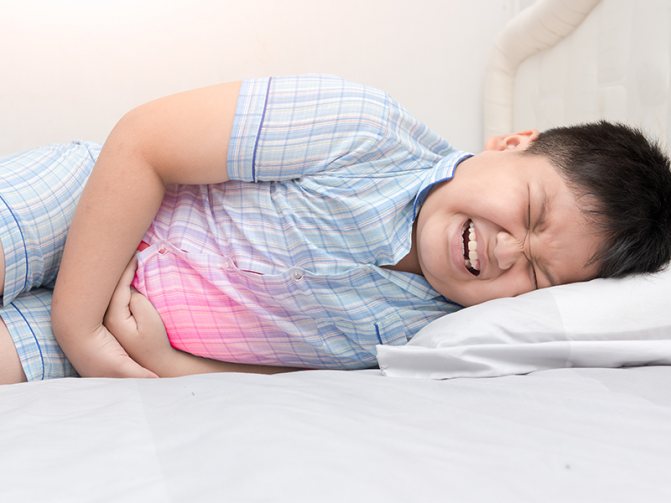
Which doctor should I contact?
Since there are many causes of cramping pain in the abdomen, it is impossible to give precise advice on which doctor should be consulted. However, we will present a number of recommendations for navigation:
- Calling an ambulance. Severe cramping pain is accompanied by loss of strength, fever, vomiting, bleeding from the genital tract, headaches, fainting, changes in the shape of the peritoneum, and a sharp decrease in blood pressure.
- Contact a female gynecologist. For menstruation, migrating pain, its sudden appearance after stress, hypothermia, physical activity. Acute cramping pain is combined with increased fatigue, pain during urination, irregular monthly cycle, elevated body temperature, vaginal discharge - blood, mucus, pus, etc. The pain is provoked by sexual intercourse, intensifies during menstruation, and radiates to the groin, sacrum, and coccyx.
- Contact a gastroenterologist. Pain in the lower abdomen and in the navel area, combined with bloating, diarrhea, constipation, frequent bowel movements, and flatulence.
- Contact a surgeon or proctologist. Cramping abdominal pain, diarrhea, frequent urge to defecate, pain in the anus and rectum, which intensifies during bowel movements.
- Contact a urologist. The pain radiates to the lower back and groin, frequent, painful urination, and blood in the urine.
- Contact an infectious disease specialist. Cramping pain in the abdomen, vomiting, nausea are combined with liquid or mushy stool, it contains blood or mucus, the pain intensifies during bowel movements, and high temperature.
If you cannot decide on the specifics of the symptoms you are experiencing, then you need to make an appointment with a general practitioner as soon as possible.
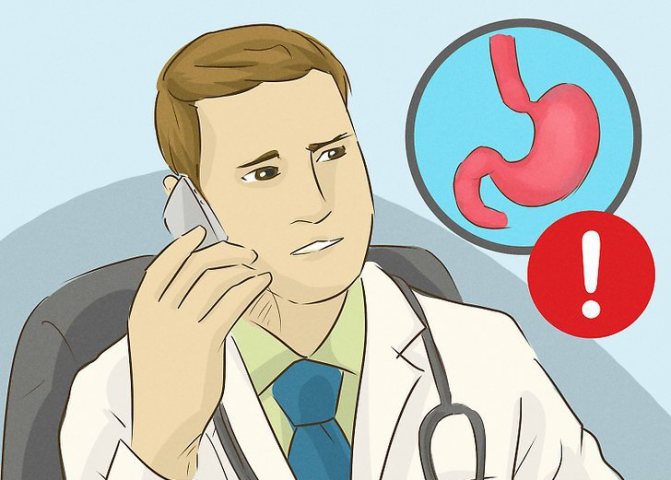
There is an increased temperature, cramping pain in the abdomen (pulling, mainly on the left side), a painful urge to defecate, loose stools up to 20 times a day, mucopurulent discharge with streaks of blood from the anus.
Infectious diseases
Intestinal infections can often provoke cramping pain in the lower abdomen on the right. One of them is dysentery, it is accompanied by a number of other symptoms, but the pain is always characterized by an acute course. Other pathogenic bacteria can also disrupt the functioning of the intestines and cause inflammation of its walls.
We recommend reading: Which doctor treats intestinal dysbiosis: who should I contact?
Cecal volvulus
Another phenomenon that manifests itself as severe pain of a cramping nature. They are accompanied by the accumulation of gases, as well as feces. Without medical attention, volvulus causes intestinal contents to leak out through the esophagus.
There are causes of pain that only occur in men or women. For the stronger sex, this phenomenon is rare, but it cannot be excluded.
Inflammatory processes of the genital organs, in particular the testicles and prostate gland, can cause spasms. The risk of the disease increases if a man, shortly before the onset of symptoms, had the flu, mumps, or infectious diseases of the reproductive system. The stronger sex can endure pain, and embarrassment delays a visit to the doctor, which is fraught with consequences for his male health. Everything can end in impotence or infertility.
A woman experiences cramping abdominal pain during pregnancy as a result of many disorders. And gynecological diseases can also be the cause. Contractions can be physiological in nature and indicate the child’s readiness to be born, but in the short term it signals a possible miscarriage.
Only timely consultation with a doctor will help maintain pregnancy and eliminate the cause of pain in the lower abdomen in women.
But also sharp, cramping pain in the lower abdomen on the left or right can indicate an ectopic pregnancy. When a fertilized egg does not pass through the fallopian tube and attaches to its lining, as it grows, the tube stretches and, as a result, bursts. The only solution here is surgical intervention; the cramping pain will not go away on its own.
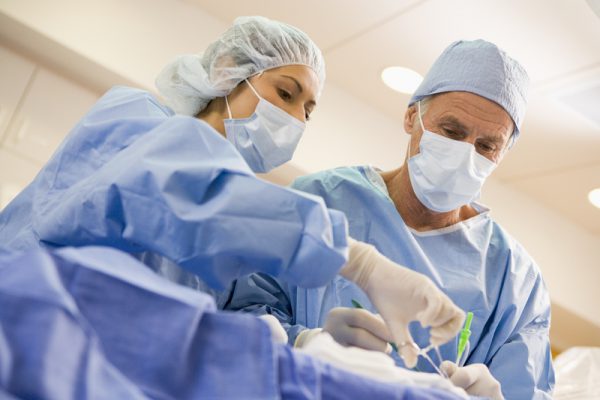
Ginger
So, if a stabbing pain appears in the stomach area, it is recommended to use medicines prepared on the basis of asafoetida, fennel or ginger root. Medicines based on ginger are especially effective, since this aromatic root contains substances that normalize the functioning of the digestive system. In addition, ginger root has anti-inflammatory properties and helps reduce pain and inflammation.
To prepare a healing potion, it is recommended to use fresh, rather than dried, ginger root, which must first be peeled and then cut into small pieces. Next, place the chopped ginger root in a small saucepan of boiling water. Boil the ginger for no more than five minutes over low heat, strain the prepared broth, add a little honey to it and consume when a stabbing pain occurs.
Pain in the intestines - symptoms of tumor processes
Among the tumor growths that appear in the intestines, the most common are polyps (benign tumors) or colon cancer.
In cases of the development of such pathologies, abdominal pain is not pronounced. At the beginning of the development of diseases, mild pain sensations that do not have a clear localization may periodically occur. But in the process of growth, the tumor can block the lumen of the intestine, leading to its obstruction and, accordingly, causing the symptoms of this disease.
If a patient has persistent constipation not related to food intake, which is difficult to correct with diet or drug treatment, then the development of a cancerous tumor can be suspected. In addition, blood impurities appearing in the stool can serve as an additional warning sign.
The development of malignant tumors is also indicated by weakness, loss of appetite, fatigue and weight loss in the patient. All this requires immediate examination and observation by specialists.
Symptoms and types of cutting pain
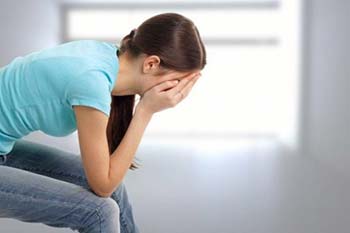
The main job of the gastrointestinal tract is the absorption of food, for this reason it is possible to trace a direct connection between the time of eating and pain:
- If the pain appears soon after eating, or rather after twenty minutes (in some cases this period can reach up to 40 minutes), and remains measured for quite a long time (up to 3 hours), then this is called early pain. pain. Such painful sensations subside if the dish (food that enters the stomach and is digested) undergoes basic processing in the stomach. Early pain in the stomach can indicate various inflammatory diseases of the middle and lower parts of the stomach, as well as speak of gastritis, peptic ulcers and polyposis that has formed on the inner surface of the intestine.
- If pain occurs after a sufficiently long period after eating (no earlier than one hour, but the period of onset of pain can be as long as 2 hours after eating) and at the same time has an increasing character, that is, it increases and becomes very intense, this is called late pain. Such sensations often overcome after emptying the intestinal tract. Late pain appears in numerous diseases of the gastrointestinal tract: gastritis with high acidity, duodenitis, increased pancreatitis, ulcerative lesions of the stomach and duodenum, cholelithiasis and cancer.
- If pain appears after a very long period after eating (4-5 hours) and it can be described as nagging and quite strong, but often such pain goes away after a couple of sips of sweet tea or after a small meal (fruit, cracker or nuts) , then we can say about hunger pain. It is quite stereotypical for peptic ulcers of the stomach or duodenal intestine, as well as for pre-ulcerative conditions.
- Many doctors separately evaluate night pain in the epigastric zone. Such painful sensations can last up to 3 hours in a row. Often such pain disappears after a certain period after simple food enters the stomach.
Time of occurrence of cutting pain in the stomach
For a more accurate diagnosis of the source of the pain and its speedy elimination, it is necessary to record the exact time of the onset of discomfort. Knowing that the main function of the gastrointestinal tract is food processing, it is possible to establish a relationship between the moment of cramping and the hour of eating.
If malaise appears 30–40 minutes after lunch and persists for several hours, then this signals early pain, which goes away after the bulk of the food is digested. Such symptoms indicate the development of the following pathological processes:
- gastritis;
- peptic ulcer;
- polyposis
If pain in the abdominal area occurs several hours after eating and is of an increasing nature, they speak of the development of late pain. The symptom most often goes away after defecation. Similar manifestations are characteristic of the following gastrointestinal pathologies:
- cancerous tumors;
- acute pancreatitis;
- gastritis with increased secretion of stomach acid;
- stomach and duodenal ulcers;
- inflammation of the duodenal mucosa;
- cholelithiasis.
The appearance of sucking pain 6–7 hours after lunch signals the development of gastralgia. A small snack or a few sips of tea will quickly relieve discomfort. Such symptoms are characteristic of progressive peptic ulcer disease.
Call the doctor
If you experience the following symptoms, do not hesitate and call a doctor:
- stabbing and cutting pain in the gastric region, which occurs regardless of food intake at a given frequency;
- constant pain in the abdomen;
- a sharp change in the localization of pain;
- increase in intensity of cutting;
- manifestation of other parallel symptoms.
Waiting for the doctor
The patient can be given the following assistance while waiting for the doctor.
- Place in a horizontal position.
- Provide peace.
- Place a cold compress on the abdominal area.
- Do not give food or drink, especially alcohol.
- Do not give medications.
- Do not rinse the stomach or intestines.
- Do not warm your stomach.
Only a cold compress can be applied to the stomach
Important! When providing first aid in the event of severe pain in the stomach, it is forbidden to give the patient painkillers until he is examined by a doctor.
Diagnostics
It is impossible to speak and define the exact range of diagnostic methods used in this case. First of all, the doctor will establish the clinical picture and only after that can you move in one direction or another.
Based on the established data, an experienced doctor will make an approximate and preliminary diagnosis. Further examination will depend on which organ is affected and inflamed.
If you have persistent pain in the intestines, you should immediately consult a gastroenterologist. It is he who specializes in these problems.
Example diagnostic methods used in this area:
- Anamnesis collection.
- Examination of the patient.
- Fecal analysis.
- Fibergastroduenoscopy - examines the upper sections of the intestine.
- Colonoscopy - the lower sections are diagnosed.
- Irrigoscopy – examination of the large intestine.
- Ultrasound.
Drug treatment
Stitching pain in the stomach can be caused by various reasons, but in no case should you self-medicate it or take pills without consulting a doctor. If the feeling of pain is too strong, then before the specialist arrives, it is allowed to take an antispasmodic or analgesic. Any irrational use of medications causes a distortion of the overall picture of the problem, which significantly complicates diagnosis. Quite often there are patients who, at the first sign of pain, drank an anesthetic drug, and this created a long-term effect of recovery. But this only temporarily relieved them of pain.
The doctor prescribes medications, but only after all examinations and an accurate diagnosis. Many people are advised to take only painkillers. For example, if the pain is associated with cramps in the intestines, the specialist will suggest giving an injection in the arm, leg or thigh. In the absence of a gag reflex, it is allowed to drink a painkiller along with an antacid.
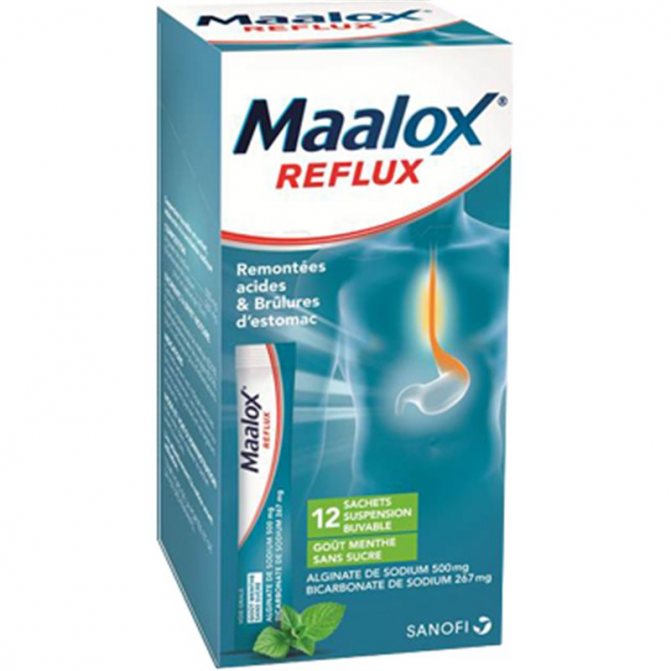
The left abdomen begins to hurt. What is the reason?
There are several possible options in which the pain is localized on the left side of the abdomen and not on the right. This:
- Irritable bowel syndrome. It occurs in people of different sexes and ages, but according to statistics, it has been noted that women over 30 years of age suffer from this pathology to a greater extent. The cause of the disease has not yet been clarified to this day, but doctors are still inclined to believe that stress is to blame. Associated symptoms: diarrhea followed by constipation, flatulence.
- Crohn's disease. This is inflammation of the gastrointestinal tract in the descending colon.
- Hirschsprung's disease. Boys are particularly affected by the disease. You need to know that this pathology is inherited. It cannot arise by itself.
Treatment of pain in the lower intestine
Only a doctor can prescribe the correct and appropriate treatment. In some cases, when the pain is an isolated incident, you can use improvised means that are in any first aid kit.
We recommend reading: Apples for pancreatitis: can you eat them, their effect on the body
Conventional antispasmodics will help remove the symptom. Medicines containing enzymes should be taken before or after meals. In order not to treat pain, you need to try to prevent problems.
What to do to prevent pain in the lower intestine? Some basic recommendations:
- Parts of the intestinal tract can often hurt if a person abuses enemas or laxatives.
- With frequent use of laxatives, the intestines are able to get used to the fact that the drugs work for them. In this case, he begins to get lazy and stops functioning at the right pace. To prevent this from happening, experts advise changing laxatives.
- What to do if you have frequent intestinal problems? Such people are definitely advised to include fiber-rich vegetables and fruits in their diet. For flatulence, it is allowed to use nutritional supplements instead.
- The intestines will work like a “clock” if they do not need fluid. The more water, the better peristalsis becomes.
- Citrus fruits contain an important substance - pectin. The main digestive organ needs such fruits.
- The intestines and stomach will be less subject to irritation and inflammation if you monitor the consumption of quality food. It is advisable to exclude: spicy, fried foods, coffee and other products that can harm the mucous membrane of these organs.
A diet for intestinal pain and dysfunction should include foods rich in fiber (although they can also cause side effects such as flatulence and bloating), or dietary supplements based on it (for example, methylcellulose and isphagula husk) .
Characteristics of pain
Acute stabbing pain in the stomach most often occurs not as a symptom of an incipient disease, but as a sign of a complication of a previously developed pathology. To make a correct diagnosis, the patient must provide the doctor with detailed information about the nature and frequency of pain attacks, because:
- The time of occurrence of severe stabbing pain in the stomach varies with different pathologies of the organ; it may be associated with food that has entered the stomach, or may be determined by the daily menu.
- The pain occurs at different times of the day and night and can be felt as a series of stabbing sensations or individual manifestations.
- The location is of great importance for appropriate diagnosis. It can be in the upper or lower lobe of the stomach, and can radiate to the back or arm.
- Intensity. The pain may be mild, or it may remind the patient of a “dagger prick.” The intensity of pain can be so high, for example, when a stomach ulcer is perforated, that the patient periodically loses consciousness from painful shock.
- Duration - one day or several, months and even years. For example, stabbing pain in the stomach after eating can last from several minutes to several hours, return or end in the absence of any therapy.
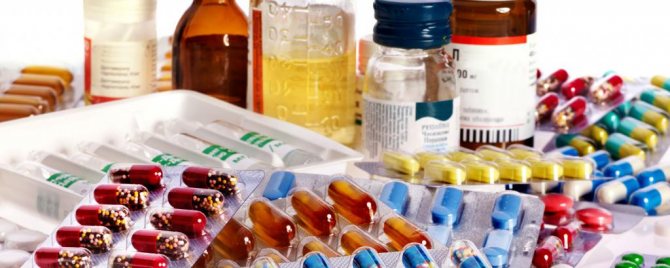
What to do if you have cramping abdominal pain
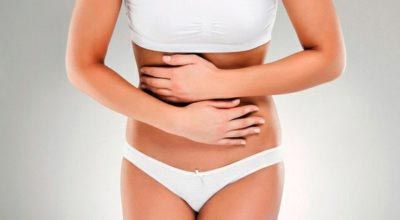
Pain in the gastrointestinal tract is considered the most common complaint not only among adults, but also among young patients of gastroenterologists. The causes of the pathological condition can be many factors: worms, diseases of the digestive system, appendicitis, indigestion, ARVI, inflammation of the kidneys or lungs. In order to respond to the body’s signal in time, you need to learn to distinguish the symptoms of such manifestations.
Abdominal injuries
Getting hit in the stomach or falling on your stomach should not be ignored. The subsequent tension in the abdominal region and gripping pain can cause rupture of organ walls and internal hemorrhages. Hospitalization followed by surgery will be required.
A common feature that unites all physiological disorders is that trouble disappears when there is no external factor. The necessary measures are taken and body functions are restored.
Folk remedies
Treatment and prevention of abdominal pain is carried out using complex measures: homeopathy, herbal medicine and reflexology.
- Mint tea. Mint is a natural sedative. It has a gentle effect on the human nervous system. Prepare as follows: pour three teaspoons into a glass of hot water. After half an hour, the product is ready for use. Drink diluted with water.
- Infusion of chamomile and immortelle. Helps relax the stomach muscles, relieves inflammation. 2 tbsp. l. the mixture of herbs is poured with a glass of boiling water and infused for 30 minutes. Take before meals three times a day. The course of treatment is 21 days.
- Motherwort juice. To quickly relieve pain, buy motherwort juice at a natural pharmacy. Dilute a teaspoon of liquid in a quarter glass of water and drink. Take the product warm.
Taping will help in the treatment of cramping attacks
Taping is based on gluing special self-adhesive tapes for therapeutic, preventive and rehabilitation purposes. They do not contain drugs, are freely breathable and stretch well without restricting movement.
Their use helps accelerate regeneration processes, reduce the intensity of pain, unload muscle fibers and stimulate lymphatic drainage.
The therapy does not replace primary treatment and is used only as a supplement. It helps improve lymph flow and blood microcirculation (as a result, inflammation decreases, swelling disappears, hematomas resolve) and reduces the duration of the recovery period.




